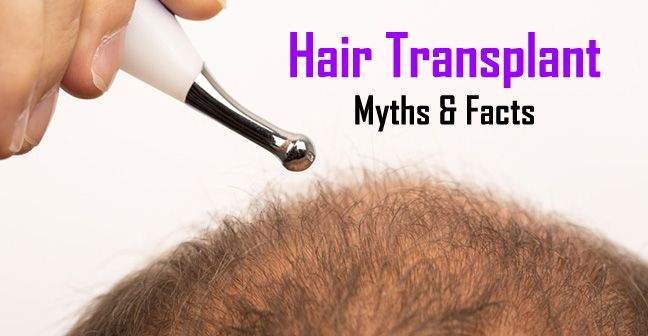Myths about Hair Transplantation

Hair transplantation is among the most dependably effective and life-altering of all the hair loss therapies. Hair transplants nowadays can look exceedingly natural (if they are performed by skilled teams). However, there are a number of myths that are occasionally discussed when it comes to hair transplantation.
- Transplanted hair lasts forever
It’s a common myth that transplanted hair relocated during a hair transplant forever lasting. Luckily, most hairs that are transplanted do mostly remain in their new site forever. However, anyone who has regularly seen a hair transplant patient for a couple decades or more will tell you that the same number of hairs that were transplanted is not always lasting over time. Most will be intact, but not all.
2. Only a single hair transplant surgery session is needed
From the moment male balding and female thinning reveals its manifestation in any patient, it always advances. While it is true that androgenetic alopecia can stop or curb for months to a year or two, androgenetic alopecia by definition never completely ceases. Anyone who gets a hair transplant must accept that existing hair in an area will gradually thin over time.
3. A hair transplant procedure is always very successful
Hair transplants are mostly very successful. With a suitable patient and experienced team, the odds of success are high. Unfortunately, hair transplant doesn’t always turn out as fruitfully as one might have hoped.
4. A hair transplant is a one-day event
A hair transplant procedure itself is a one-day event, but the real procedure when one contemplates the time from the surgery to the time where the patient recovers back to normal varies from a few days to a few months. The real recovery time differs from patient to patient and also on the scope of the surgery.
5. A hair transplant is always the right option for treating hair loss
It’s untrue that a hair transplant is always an option for any patient with hair loss. Some patients may be too young, some suffer from medical issues that prohibit surgery, and some have a type of hair loss that also won’t show any success if a hair transplant were to be performed.
6. A hair transplant is without any complications
Hair transplants are fairly safe. But it’s a little ignorant to say that they are without any complication. Patients may exhibit redness, swelling and crusting postoperatively. Overall, the recovery process in FUE procedures is much easier than FUT procedures. But there are uncommon complications in hair transplant surgery that involve long-lasting nerve pain (more in FUT than FUE procedures) and long-term scalp redness. Unless the procedure is carefully monitored by an experienced physician, a patient can even get sick.
7. You will regain the hair density of your youth
A hair transplant is a surgical procedure which involves transplanting anywhere from 10 to 10,000 hairs into the balding area. If an area of hair loss is minor, it may be possible to build some good density in the area – but the density is usually less than it once was. For example, in a patient with major hair loss, a density of 35-40 follicular units per square centimetre will usually be generated. This area likely had a density of 90 or more follicular units per square centimetre the time of no hair loss. Competent surgeons can often assisting making 35-40 follicular units seem like the original density.



